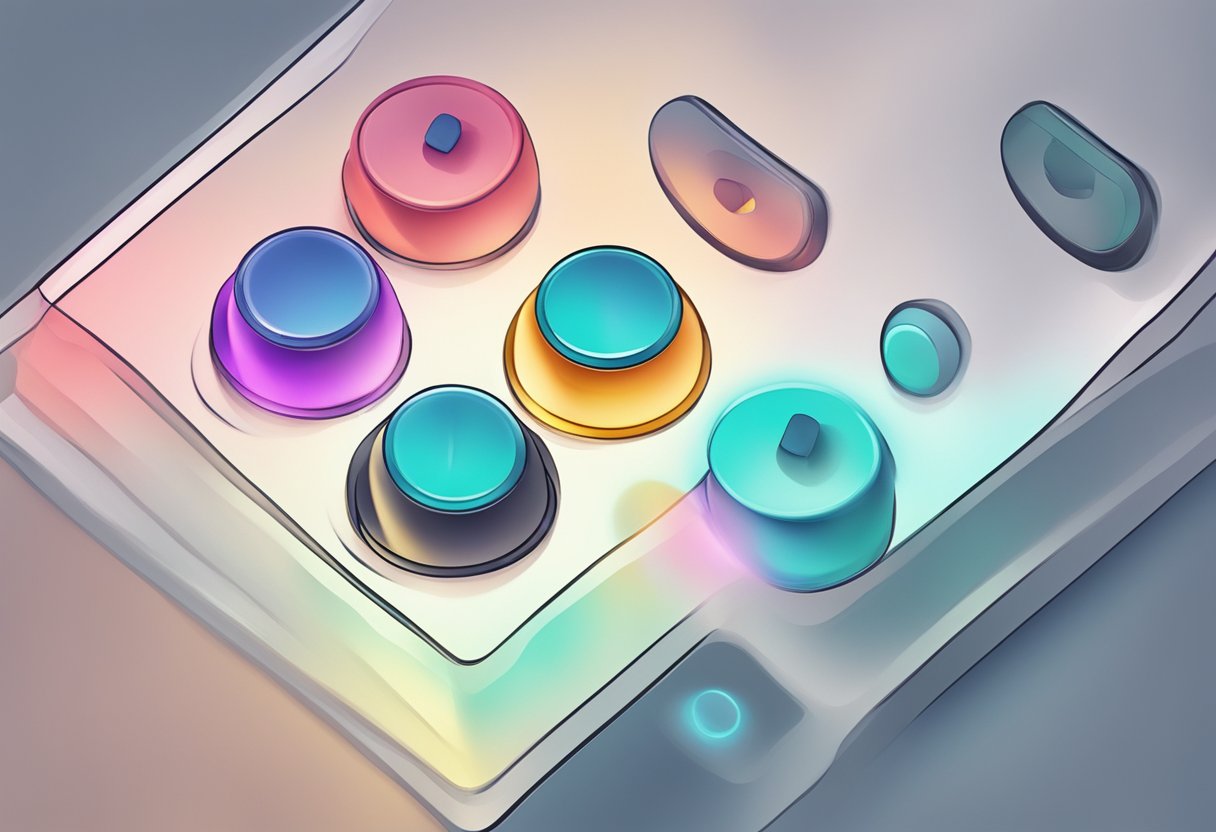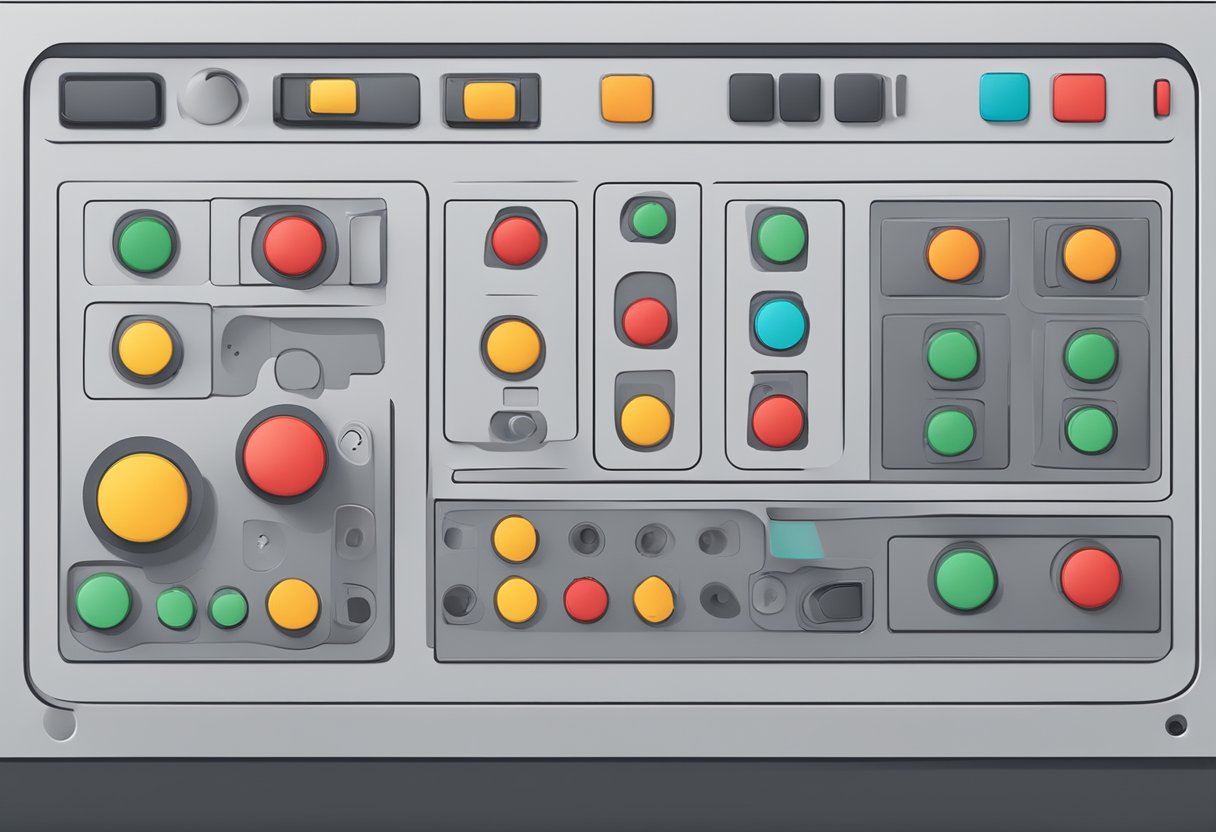Contact
Write to Us And We Would Be Happy to Advise You.
Do you have any questions, or would you like to speak directly with a representative?
By peter
If you’re looking for a reliable and easy-to-use button for your electronic device, a membrane push button may be just what you need. Membrane push buttons are a type of switch that use a thin, flexible membrane to make contact with an underlying circuit. They are commonly used in a variety of electronic devices, from calculators and remote controls to medical equipment and industrial machinery.

One of the main advantages of membrane push buttons is their durability. Because they have no moving parts, they are less likely to wear out or break down over time. They are also resistant to moisture and other environmental factors, making them ideal for use in harsh or outdoor environments. Additionally, membrane push buttons are often more affordable than other types of switches, making them a popular choice for manufacturers looking to keep costs down.
Overall, membrane push buttons are a reliable and cost-effective option for a wide range of electronic devices. Whether you’re building a new product or repairing an existing one, a membrane push button may be just what you need to get the job done.

A membrane push button is a type of switch that is activated by pressing a thin, flexible membrane that is usually made of polyester or polycarbonate. The membrane is coated with a conductive material, such as silver or carbon, which makes contact with a circuit board when the button is pressed.
The membrane is typically made up of several layers, including a graphic overlay that displays the button labels or icons, a spacer layer that helps to maintain the proper distance between the membrane and the circuit board, and a backer layer that provides support for the membrane. The graphic overlay is often made of a durable material such as polyester or polycarbonate, and can be printed with a variety of colors and designs.
The operating principle of a membrane push button is relatively simple. When you press the button, the conductive material on the membrane makes contact with the circuit board, completing the circuit and allowing current to flow. When you release the button, the membrane returns to its original position, breaking the contact and interrupting the flow of current.
Membrane push buttons are often used in applications where a low profile and a high degree of flexibility are required. They are typically less expensive and more durable than traditional mechanical switches, and can be customized to meet a wide range of specifications. They are commonly found in consumer electronics, medical devices, and industrial control systems.
In summary, a membrane push button is a type of switch that is activated by pressing a thin, flexible membrane that is coated with a conductive material. The membrane is typically made up of several layers, including a graphic overlay, a spacer layer, and a backer layer. When you press the button, the conductive material on the membrane makes contact with the circuit board, completing the circuit and allowing current to flow. Membrane push buttons are often used in applications where a low profile and a high degree of flexibility are required.

Membrane push buttons are highly customizable, making them ideal for a wide range of applications. In this section, we will discuss the various design and customization options available for membrane push buttons.
One of the most significant advantages of membrane push buttons is their ability to be customized in terms of size and shape. Membrane push buttons can be designed to fit almost any size or shape requirement, making them ideal for applications where space is limited. Additionally, membrane push buttons can be designed to fit almost any surface, including curved and irregular surfaces.
One of the most significant advantages of membrane push buttons is their ability to be customized with graphic overlays. Graphic overlays are a thin layer of material that is placed over the membrane switch. The graphic overlay can be printed with custom graphics, including text and images, allowing for a high level of customization.
Graphic overlays can be made from a range of materials, including polyester, polycarbonate, and vinyl. Each material has its own unique properties, making it suitable for different applications. For example, polyester overlays are highly durable and resistant to abrasion, making them ideal for applications where the membrane switch is exposed to harsh environments.
In addition to custom graphics, graphic overlays can also be customized with different colors and finishes. This allows for a high level of customization, ensuring that the membrane switch fits seamlessly into the overall design of the product.
Overall, membrane push buttons offer a high level of customization, making them ideal for a wide range of applications. Whether you need a membrane switch that is a specific size or shape or requires a custom graphic overlay, membrane push buttons can be designed to meet your exact requirements.
When selecting a membrane push button, there are a few key technical specifications to consider. These specifications include the electrical and mechanical properties of the button.
The electrical properties of a membrane push button include the voltage rating, current rating, and contact resistance. The voltage rating specifies the maximum voltage that the button can handle. The current rating specifies the maximum current that the button can handle. The contact resistance specifies the resistance between the contacts when the button is pressed.
Most membrane push buttons have a voltage rating of 24VDC and a current rating of 50mA. The contact resistance is typically less than 100mOhm. It is important to select a button with the appropriate electrical properties for your application to ensure proper performance and safety.
The mechanical properties of a membrane push button include the actuation force, travel distance, and lifecycle. The actuation force specifies the amount of force required to activate the button. The travel distance specifies the distance that the button travels when activated. The lifecycle specifies the number of times that the button can be pressed before it fails.
Most membrane push buttons have an actuation force of 150-200g and a travel distance of 0.2-0.4mm. The lifecycle is typically 1 million cycles. It is important to select a button with the appropriate mechanical properties for your application to ensure proper tactile feedback, durability, and lifespan.
By considering these technical specifications, you can select a membrane push button that meets your application requirements and provides reliable performance.
Membrane push buttons have a wide range of applications and use cases. They are commonly used in both consumer electronics and industrial controls.
In the realm of consumer electronics, membrane push buttons are often used in devices such as remote controls, calculators, and gaming controllers. They are also used in home appliances such as microwaves, ovens, and washing machines. The reason for their popularity in consumer electronics is due to their low profile, durability, and ease of customization.
In the industrial sector, membrane push buttons are used in a wide range of equipment such as medical devices, laboratory equipment, and industrial machinery. They are often used in environments where harsh conditions are present such as extreme temperatures, humidity, and exposure to chemicals. Membrane push buttons are preferred over traditional mechanical switches due to their ease of cleaning and maintenance, as well as their ability to withstand harsh environments.
When it comes to industrial controls, membrane push buttons are often customized to meet the specific needs of the application. They can be designed to include LED indicators, tactile feedback, and custom graphics.
Overall, the versatility and durability of membrane push buttons make them a popular choice in a wide range of applications and use cases. Whether you are looking to incorporate them into your consumer electronics or industrial controls, membrane push buttons are a reliable and customizable option.
To ensure that your membrane push button lasts for a long time, it is important to follow a regular cleaning routine. The cleaning process is simple and can be done with a soft cloth, mild soap, and water. Avoid using abrasive materials or harsh chemicals that could damage the surface of the button.
First, turn off the power to the device. Then, use a soft cloth dampened with water and mild soap to gently wipe the surface of the button. Be sure to remove any dirt, dust, or debris that may have accumulated on the surface. Avoid getting water or soap inside the device.
After cleaning, dry the button with a clean, dry cloth. Once the button is dry, you can turn on the power to the device. Repeat this cleaning process as often as necessary to keep your membrane push button clean and functioning properly.
Membrane push buttons are known for their durability and reliability. They are designed to withstand repeated use and to last for a long time. The lifespan of a membrane push button depends on several factors, including the quality of the materials used, the frequency of use, and the environment in which the button is used.
In general, membrane push buttons can last for several years with proper care and maintenance. They are less prone to wear and tear than traditional mechanical switches, which can become worn out over time. Membrane push buttons are also less likely to malfunction due to dirt, dust, or debris that may accumulate on the surface.
Overall, membrane push buttons are a reliable and durable choice for a wide range of electronic devices. By following a regular cleaning routine and taking care to avoid excessive force or harsh conditions, you can ensure that your membrane push button will last for many years to come.
Do you have any questions, or would you like to speak directly with a representative?